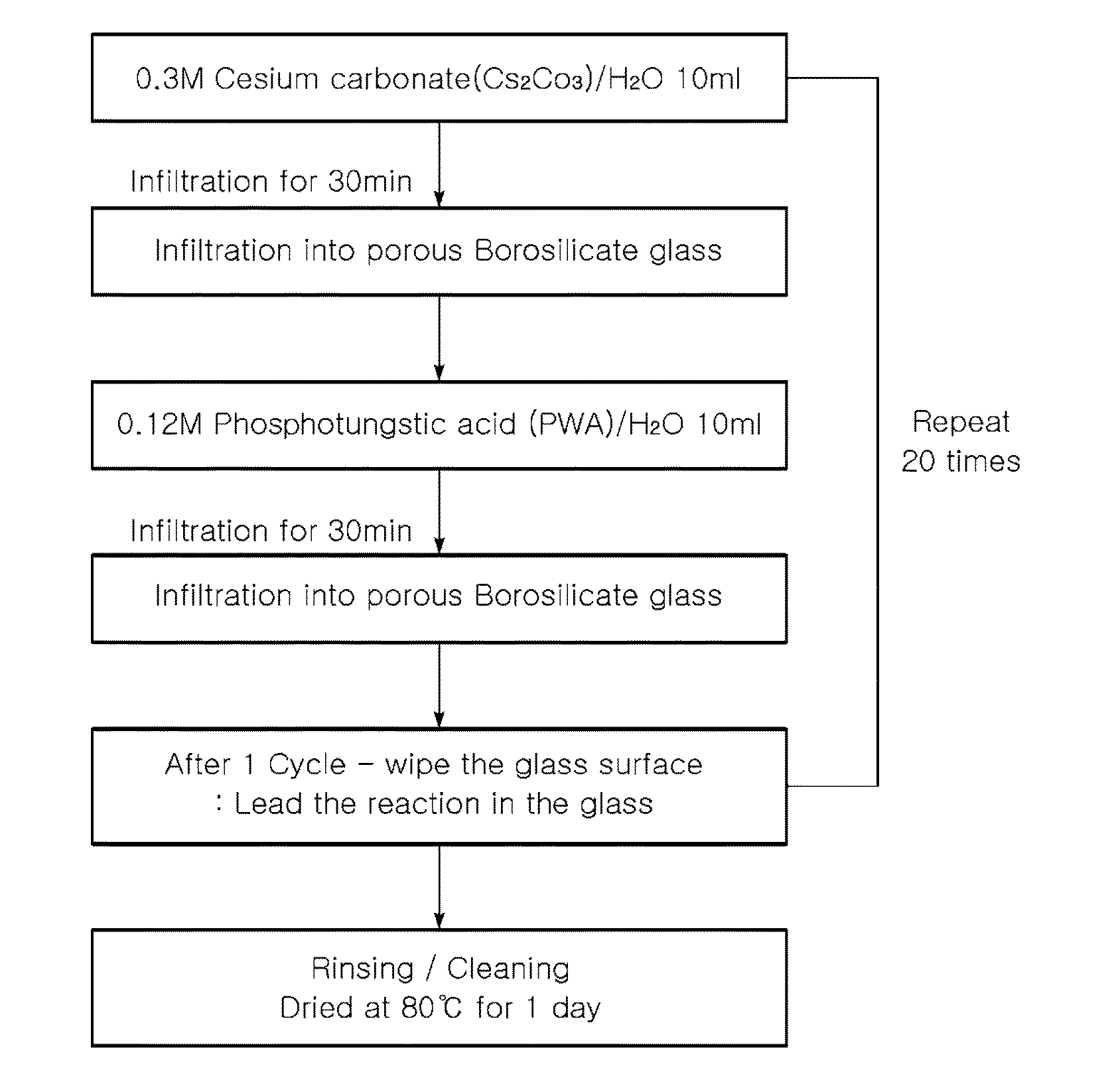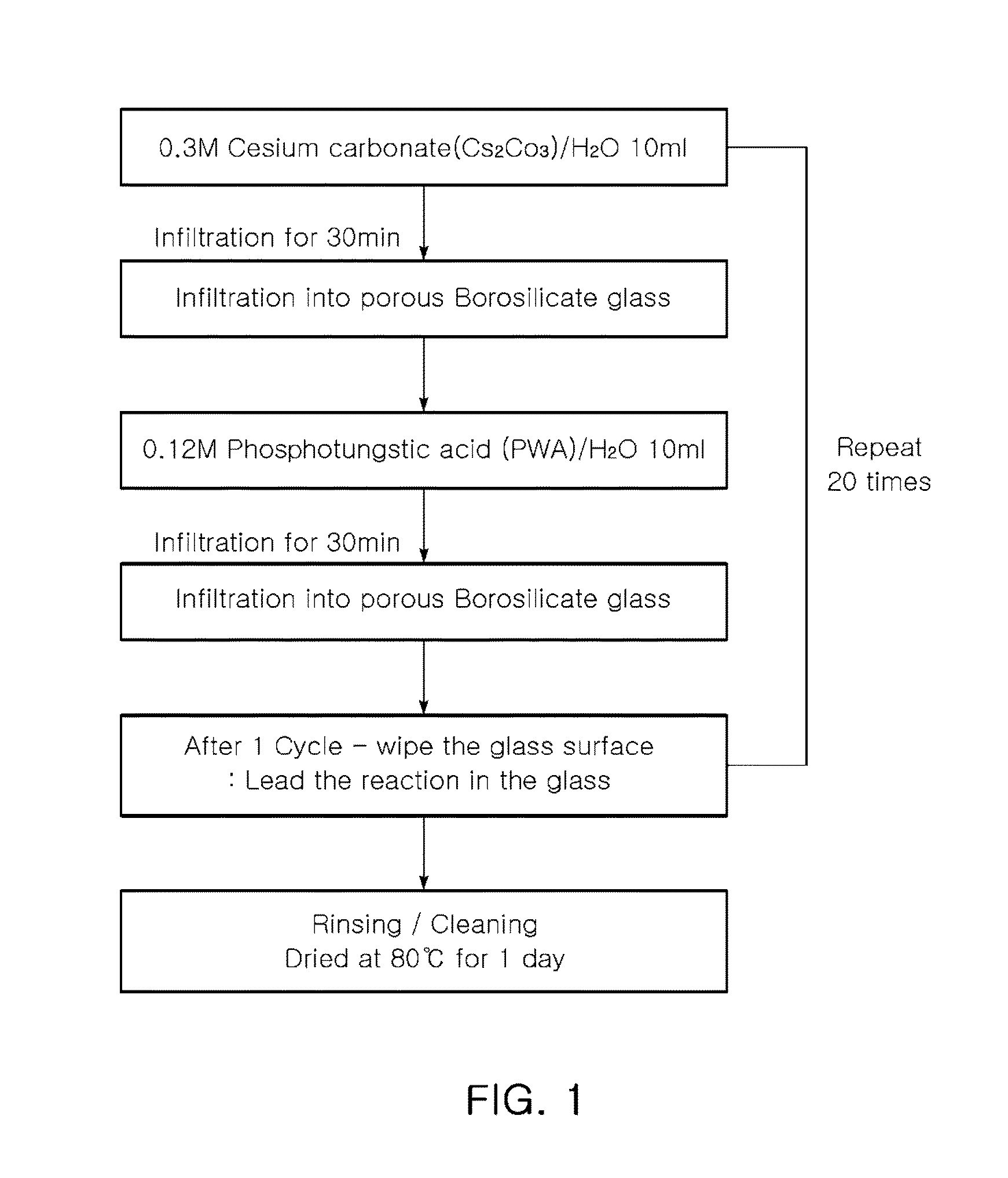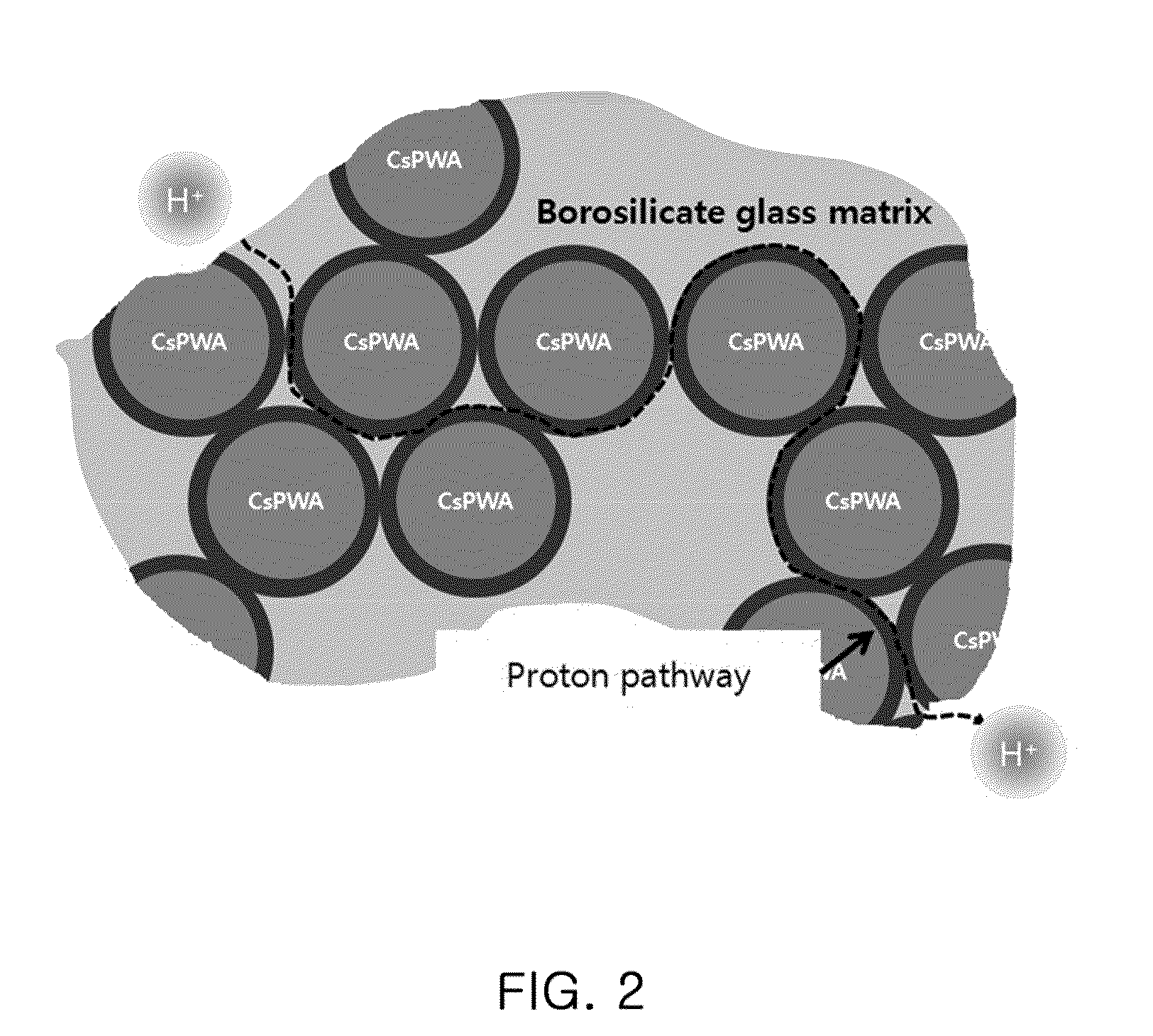Proton-conducting hybrid glass and method for manufacturing the same
a technology of proton-conducting hybrid glass and manufacturing method, which is applied in the direction of non-metal conductors, sustainable manufacturing/processing, cell components, etc., can solve the problems of difficult to reduce the use of catalysts, low production cost, and low economic competitiveness of proton-exchange membrane fuel cells (pemfcs) of the related art, and achieve high proton conductivity, excellent thermal and chemical stability, and good catalytic activity
- Summary
- Abstract
- Description
- Claims
- Application Information
AI Technical Summary
Benefits of technology
Problems solved by technology
Method used
Image
Examples
experimental example 1
Ion Conductivity Measurement
[0049]In order to determine whether or not the proton-conducting hybrid glass is suitable to be used as an electrolyte of a fuel cell, the ion conductivity was measured. The results are presented in FIG. 3.
[0050]The ion conductivity measurement test was performed by fixing both sides of the proton-conducting hybrid glass with Au electrodes using an AC impedance analyzer (Solatron, SI 1287, SI 1260, available from ULVAC KIKO Inc.). Resistance in the thickness direction of the glass was measured using Nyquist plots, and then conductivity was obtained according to Equation 1 below. The resistance was calculated to be about 40Ω. When the cross-sectional area and thickness were applied to the resistance the ion conductivity was found 10−2S / cm, which is within the range available for the electrolyte for a fuel cell.
σ=1 / (R×A) Equation 1
[0051]In Equation 1 above, σ is the ion conductivity (S / cm), R is the resistance (Ω), and A is the area of the glass.
experimental example 2
FE-SEM Measurement
[0052]The microscopic structure of the CsPWA infiltrated into the proton-conducting hybrid glass, which was manufactured in Example 1, using a Field Emission Scanning Electron Microscope (FE-SEM). The results are presented in FIG. 4A and 4B. FIG. 5A and FIG. 5B are FE-SEM pictures of the surface and the inside of the hybrid glass (Duran® glass filter disc) of Example 1 before being impregnated in the Cs carbonate solution.
[0053]Comparing FIG. 4A and FIG. 4B to FIG. 5A and FIG. 5B, it can be found that the CsPWA was created on the surface and inside the pores of the proton-conducting hybrid glass.
experimental example 3
CsPWA Crystal Structure Measurement
[0054]In order to determine the crystal structure of the CsPWA created on and inside the proton-conducting hybrid glass, which was manufactured in Example 1, X-Ray Diffraction (XRD) measurement and Fourier Transform Infrared Spectroscopy (FT-IR) measurement were performed as follows.
(1) XRD Measurement
[0055]The XRD measurement was performed at a rate of 1° / min in the range of 20 from 5° to 80° using CuKα (40 kV-100 mA). The results are presented in FIG. 6. Referring to FIG. 6, peaks that represent Keggin structures can be found at 26°, 30°, and 38°.
(2) FT-IR Measurement
[0056]As an infrared spectroscope, VERTEX-70 (Hyperion 2000, available from Bruker Optic) was used. The results are presented in FIG. 7A and FIG. 7B. Referring to FIG. 7A, the Keggin structure of the CsPWA created in the inside pores of the proton-conducting hybrid glass can be appreciated from the bonding of coordinate atoms around the oxygen atom (1077 cm−1: P—O, 884 cm−1: W—Oc—W, ...
PUM
| Property | Measurement | Unit |
|---|---|---|
| Temperature | aaaaa | aaaaa |
| Temperature | aaaaa | aaaaa |
| Molar density | aaaaa | aaaaa |
Abstract
Description
Claims
Application Information
 Login to View More
Login to View More - R&D
- Intellectual Property
- Life Sciences
- Materials
- Tech Scout
- Unparalleled Data Quality
- Higher Quality Content
- 60% Fewer Hallucinations
Browse by: Latest US Patents, China's latest patents, Technical Efficacy Thesaurus, Application Domain, Technology Topic, Popular Technical Reports.
© 2025 PatSnap. All rights reserved.Legal|Privacy policy|Modern Slavery Act Transparency Statement|Sitemap|About US| Contact US: help@patsnap.com



